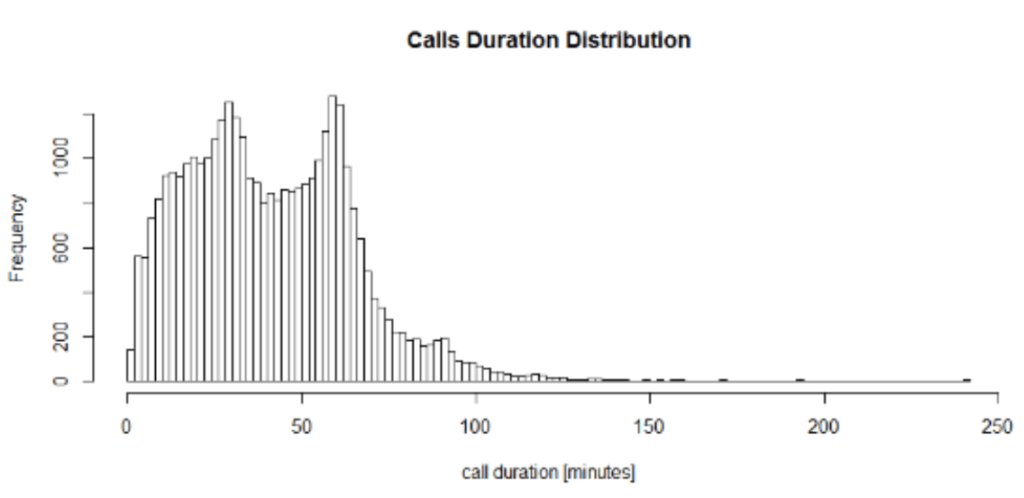Sales strategies
Determining the ideal duration of a first sales call

Chris Orlob
Content Author
Published on: May 10, 2017

In the Gong Research Labs series, we publish data from analyzing sales calls with natural language processing and AI. Subscribe here for new data every week.
. . .
Introduction: Setting the Stage for Your First Sales Call
A couple months ago I asked a question on LinkedIn that stirred a debate …
Should account executives combine discovery calls and demos in the same call, or separate them into two calls?
Which of those approaches leads to advancing and closing deals at a higher rate?
While we haven’t answered that question with data, it did make me wonder about a related question we could answer with data:
Analyzing Data: How Call Duration Influences Success
How long should an account executive’s first call with a new opportunity be?
Do shorter, 20-ish minute calls have a higher rate of advancing (and eventually closing), or is it better to have longer calls, upward of 60 minutes? What “intro call” length increases the likelihood of getting a “second date” (and eventually a CL-Won deal)?
To answer this question, the data science team and I at Gong analyzed a targeted pool of 30,000 account executive “first calls” within our conversation intelligence platform.
Here’s a look at the distribution of calls in terms of their duration:

Notice there are peaks around the 30 and 60-minute marks, illustrating that calls tend to be scheduled for either 30 or 60-minute time slots on the calendar.
Optimal Call Length: Key Findings and Insights
So among this pool of calls with various lengths, which duration is optimal for securing the next step and eventually closing the deal?
Answer: None of them and all of them.
There was no statistically significant correlation between the duration of the first call of an opportunity and the likelihood of getting a second meeting.
However, just because there’s no correlation between call length, and securing the next step doesn’t mean the length of our calls doesn’t affect our sales.
Getting the next step when a prospect shows up to the first meeting is one thing.
Getting them to actually show up to the first meeting is another challenge entirely:

Implementing Findings: Recommendations for Effective Sales Calls
You’re 12% more likely to get a prospect to show up to your first meeting if you send a 30-minute calendar slot rather than a 60-minute one.
It’s also harder for an SDR to “sell” a 60-minute meeting compared to a 30-minute one. We have no way of knowing how many first meetings are left on the table due to that.
Some may argue that 60 minutes is required for complex sales. You could also argue it gets the conversation out of a scripted sales call and into more of a deep exchange.
But when I worked for InsideSales.com, the top enterprise account executive (selling to 10,000 employee companies) kept his first calls down to a lean 22 minutes. On purpose.
We have to choose between depth and volume. Would you prefer fewer 60-minute calls or a greater quantity of 30-minute calls?
If you liked this article you may also be interested in:
- Is cold calling dead? Follow these rules for successful cold calling
- Cold Calling – The 14 Best Tips of All Time for Salespeople

Content Author
Chris Orlob is the Co-Founder and CEO of Pclub.io, a leading sales training platform designed to help sales professionals accelerate their revenue growth. He is best known for his pivotal role at Gong, where he helped scale the company from $200,000 to $200 million in ARR, contributing to a $7.2 billion valuation. During his tenure at Gong, Chris led the creation of Gong Labs and excelled in various go-to-market roles. Today, through Pclub.io, he leverages his deep expertise in sales and revenue operations to coach over 11,000 SaaS sellers.
Discover more from Gong
Check out the latest product information, executive insights, and selling tips and tricks, all on the Gong blog.



